Today we do a road trip out from Dubrovnik and back, visiting a new country for us - Montenegro. We also take in Cavtat, an awesome laid back stroll-able city. It's a 110-mile round trip
It's not getting old - once again on a picturesque roadway clinging to the slopes over the sea.
Now in Perast, Montenegro - its existence as a full-on town goes back about 700 years. Near Perast there are two islets: one is called Sveti Đorđe (St George) and the other Gospa od Škrpjela (Our Lady of the Rocks), and each has a picturesque chapel. Gospa od Škrpjela is the only artificially-built island in the Adriatic. In the photo below, St George is immediately to the right of the narrow steeple, and Our Lady is to the right of it.
We initially wandered about the street along the waterfront.
A wedding and an anchor, you interpret how they find themselves shown side-by-side here - hint: it's a good thing.
For about 5 bucks each, we take a 10-minute hop to Our Lady of the Rocks.
Approaching Our Lady, hmmm, looks like this low rising artificial island will see some changes with Global Warming Sea Rise, but perhaps it is just high enough. It's probably better situated being in a back bay and at the side of the Adriatic, to have not seen the periodic flooding that Venice has.
Our "boat company" crosses back and forth every 1/2 hour, so we soon hop on for the return.
Heading back to our car, it's a bit of an uphill slog in the heat.
We see the Regal Princess visiting the Bay of Kotor - it's the same class as the Enchanted Princess we'll board out of England for NYC in a couple of months.
"The old (1200-1400 years?) Mediterranean port of Kotor is surrounded by fortifications built during the Venetian period. It is located on the Bay of Kotor (Boka Kotorska), one of the most indented parts of the Adriatic Sea. Some have called it the southernmost fjord in Europe, but it is a ria, a submerged river canyon. Together with the nearly overhanging limestone cliffs of Orjen and Lovćen, Kotor and its surrounding area form an impressive landscape."
A Byzantine church:
Rather than back track around the Bay, we take a short ferry hop across a narrowing, our timing is perfect and we drive right on.
Back to Croatia, we find Cavtat.
"Originally Greek-founded in the 6th century BC under the name of Epidaurus. The surrounding area was inhabited by the Illyrians, who called the city Zaptal. The town changed its name to Epidaurum when it came under Roman rule in 228 BC. Justinian I the Emperor of the Byzantine Empire sent his fleet to Cavtat during the Gothic War (535–554) and occupied the town. The city was sacked and destroyed by the Avars and Slavs in the 7th century. Refugees from Epidaurum fled to the nearby island, Laus (Ragusa), which over time evolved into the city of Dubrovnik."
We visit painter Vlaho Bukovac's childhood home in Cavtat.
HIs parents allowed him, as a child, to decorate the walls.
Painting depicting a textile with images of his beheaded children - a bit strange.
We continue by strolling around the park-like peninsula - quiet and scenic.
A big yacht, with a boat garage, and we're sure, an elevator - after all it is 5-decks tall. It must receive every cable channel on Earth. What, no helicopter, we'll pass.
Typical beach around these parts - be sure to bring your rock shoes, but it's still nice.
Time to head for "home" - our mighty black KIA parked back in its assigned "car slip".

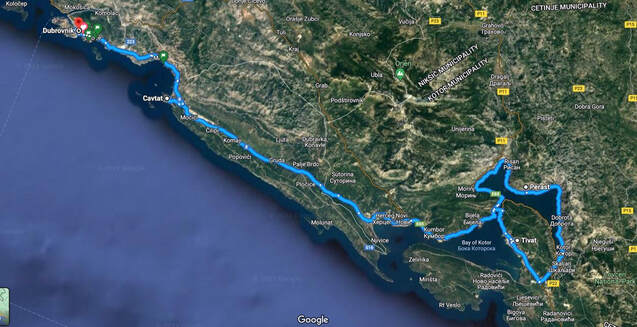









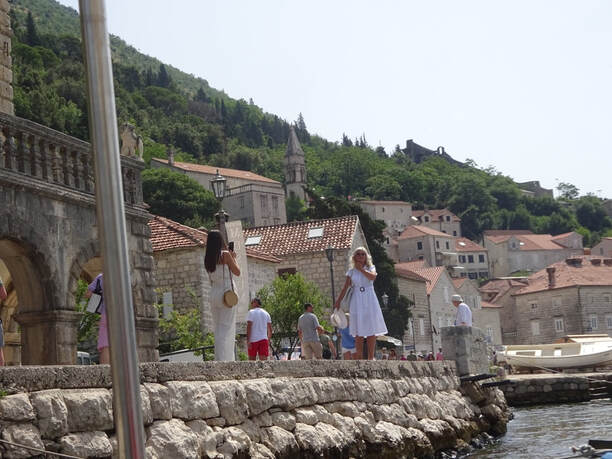



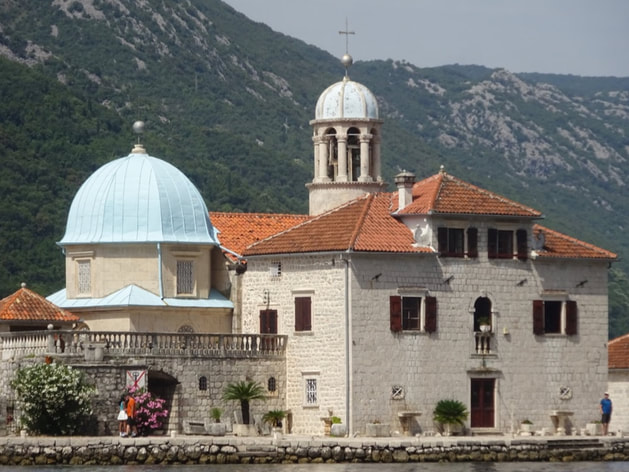
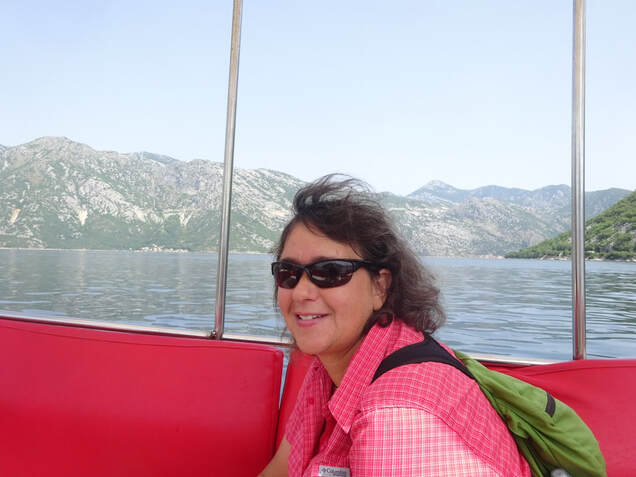











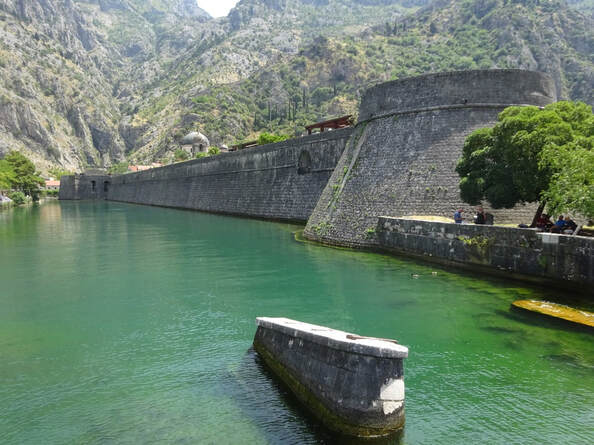


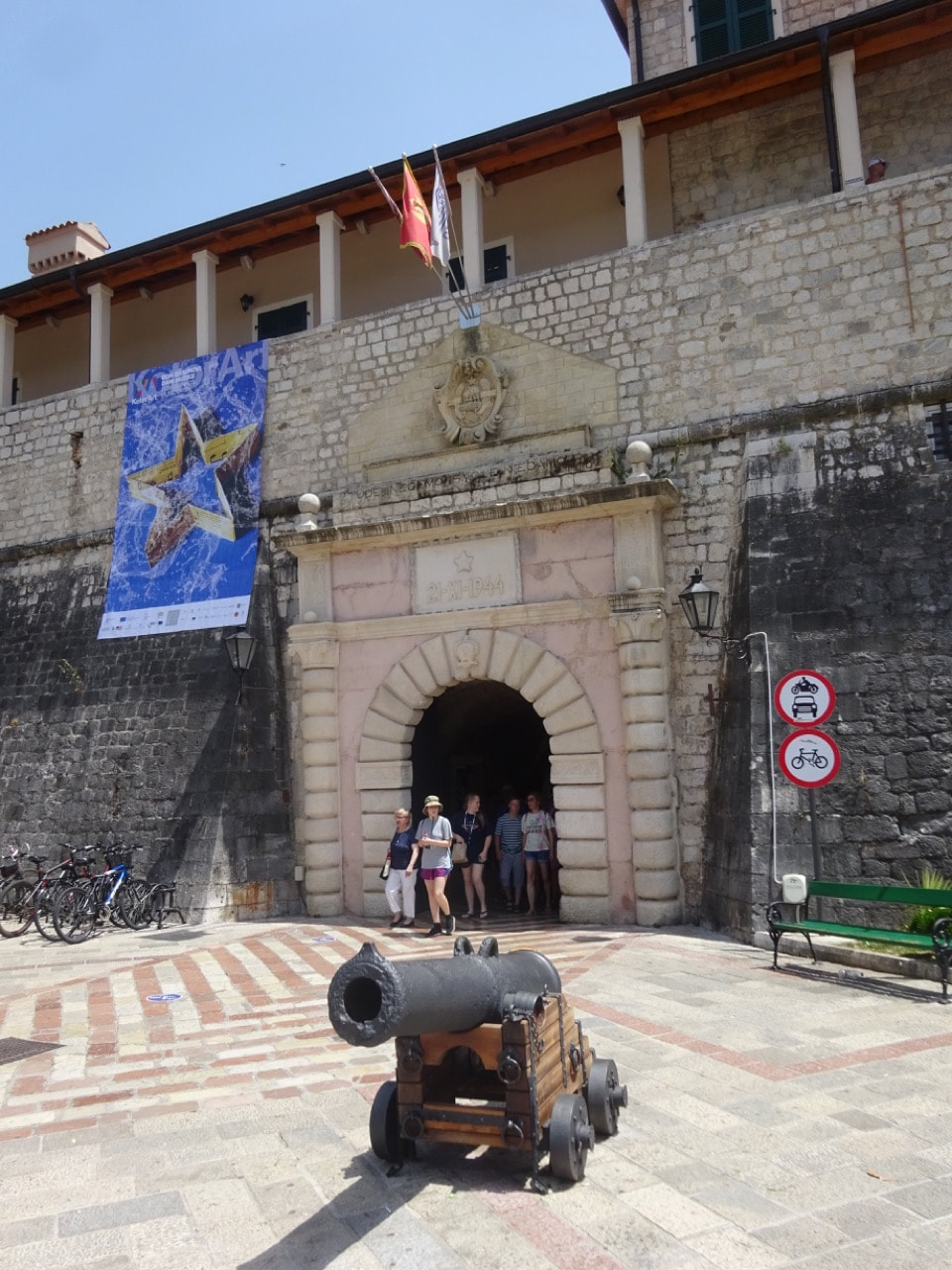

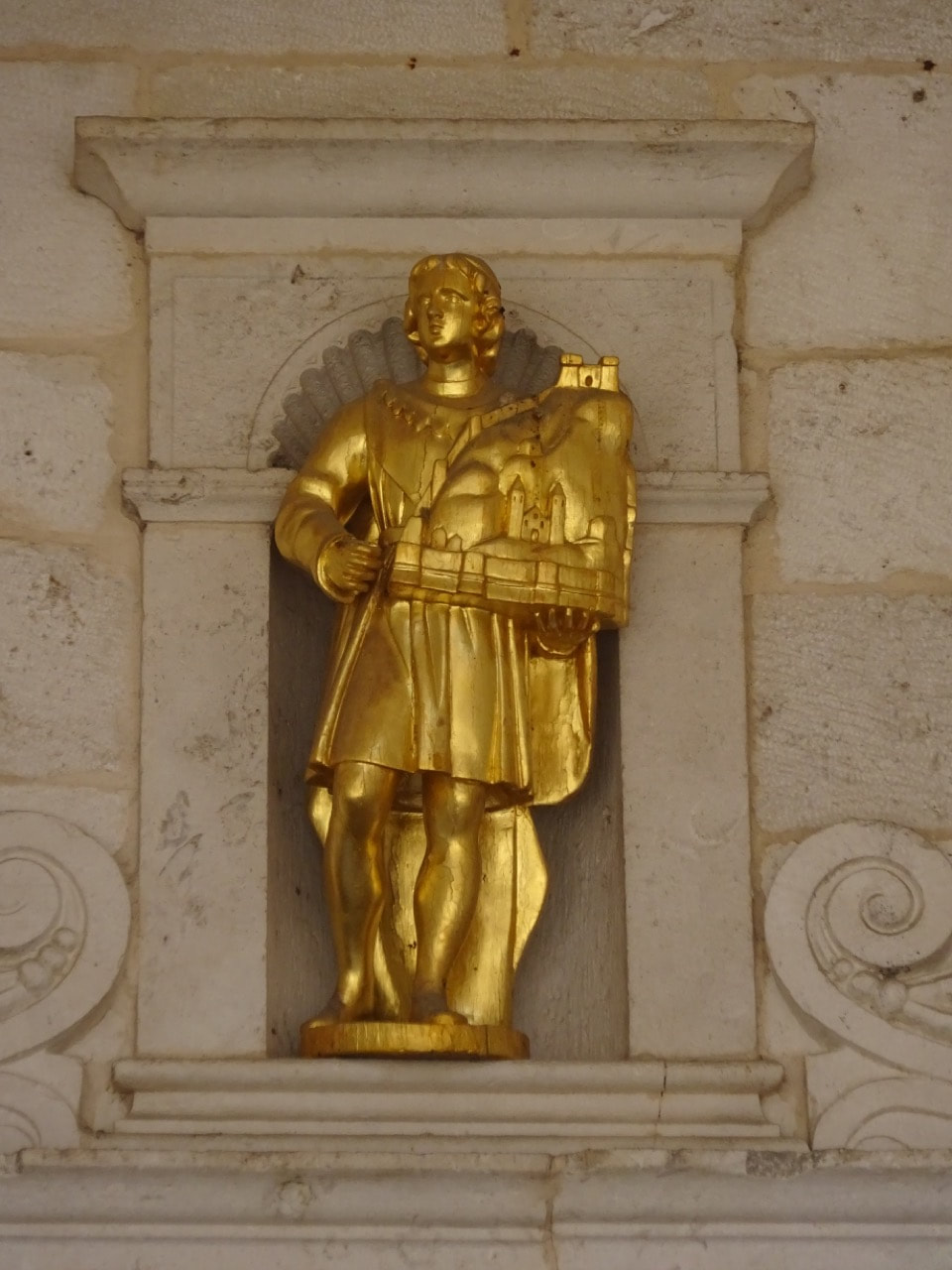













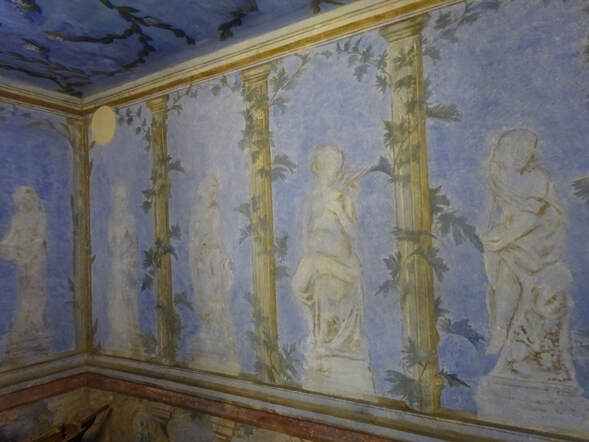





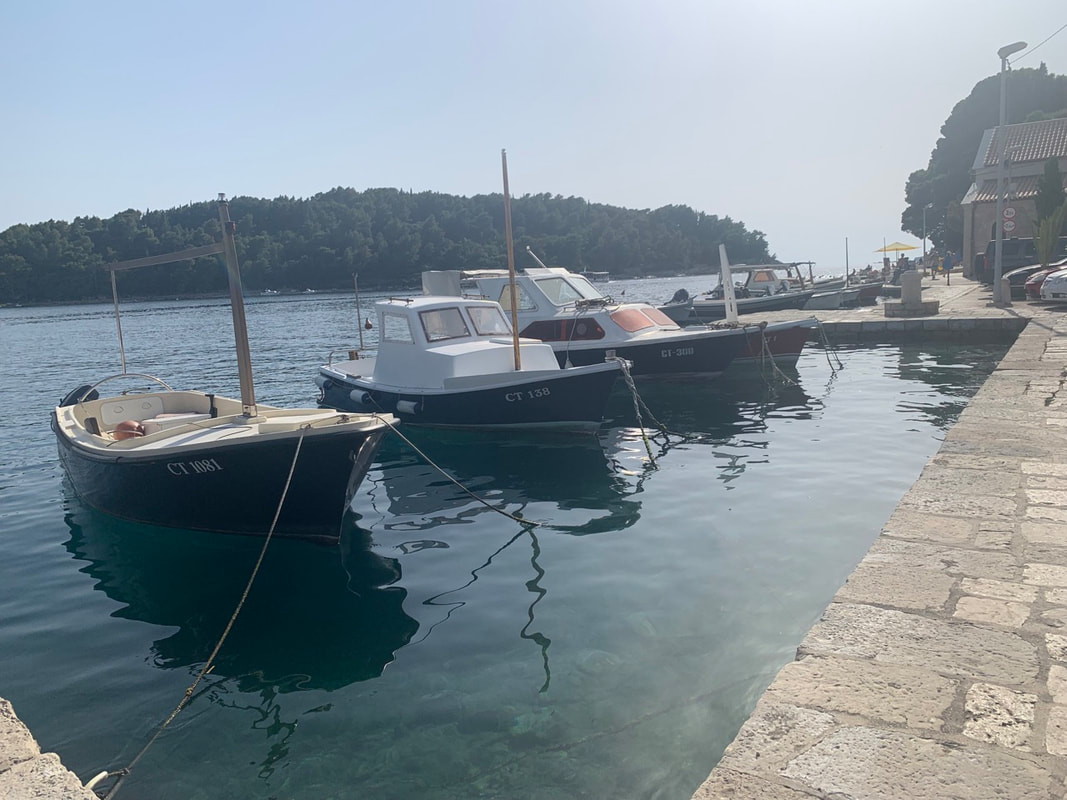










 RSS Feed
RSS Feed
